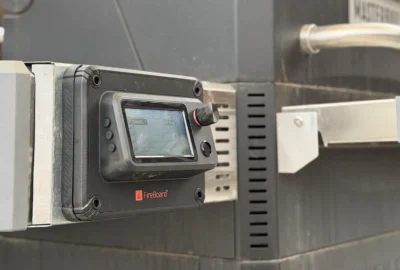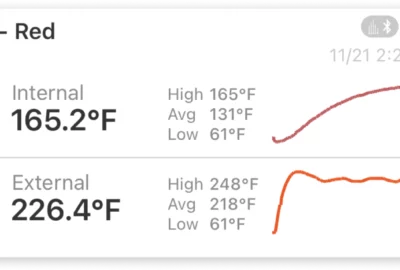Tech
A Look at the In-House Product Development of FireBoard Labs
New products at FireBoard develop organically, stemming from the company’s mission of “solving simple problems through the use of smart technology.”

FireBoard’s Director of Product Design & Development Paul Skelton reviewing a prototype.
In addition to manufacturing our line of cloud-connected thermometers, FireBoard is continually creating innovative technology requiring a design cycle that incorporates mechanical and electrical disciplines. It is a process with many steps, and we are fortunate to have a group of engineers, designers, and technicians passionate about bringing new products to market.

Harold and Mathew inspect a prototype board fresh off the SMT line at FireBoard Labs
The process begins with an initial idea, accompanied by physical requirements, technical requirements aesthetic considerations, and consumer research. After this brainstorming phase, the initial design begins, including electrical design. So not only are we 3D printing physical parts to build a tangible item to hold, but we are also creating early circuit board prototypes. FireBoard Founder Ted Conrad explains “Our in-house SMT line speeds up short-run production as we can quickly produce a few dozen boards for beta testing, while also having the capacity to handle production down the road.”

FireBoard Production Manager Jennifer Peterson inserting THT components into boards fresh off FireBoard’s SMT Line.
Also here in the early stages, the initial Firmware work begins and revisions are made based on initial testing. Once test fittings are made with prototype parts, tooling can be ordered for prototype production parts.

FireBoard Technician Matthew Zuiss prepping the SMT line and inspecting components.
Next will come the second revision board prototypes, early mechanical first articles, and work toward fully functional firmware.

Rapid Prototyping with 3D printing and producing PCBs in-house are key to how FireBoard Labs develops new products.
At this point, we are able to perform beta testing and take the units out into the field making observations. This may result in further prototypes or a small quantity run of the final board version.

Firmware Engineer Tyler Lubke writing for a product under development at FireBoard Labs.
If a new product has advanced to this point in the process, product packaging will be finalized, and groundwork will be laid for marketing campaigns including the product’s launch.

FireBoard’s Electrical Engineer Harold Tarun flashes Firmware onto a prototype PCB, and tests his work.
As Founder Ted Conrad explains “By being able to iterate through our design process in-house, we can quickly determine what changes need to be made to make the product perform as intended.”

Tyler and Paul talking about Firmware edits.

Bringing new products to market at FireBoard Labs requires electrical and mechanical engineering.









Leave a reply